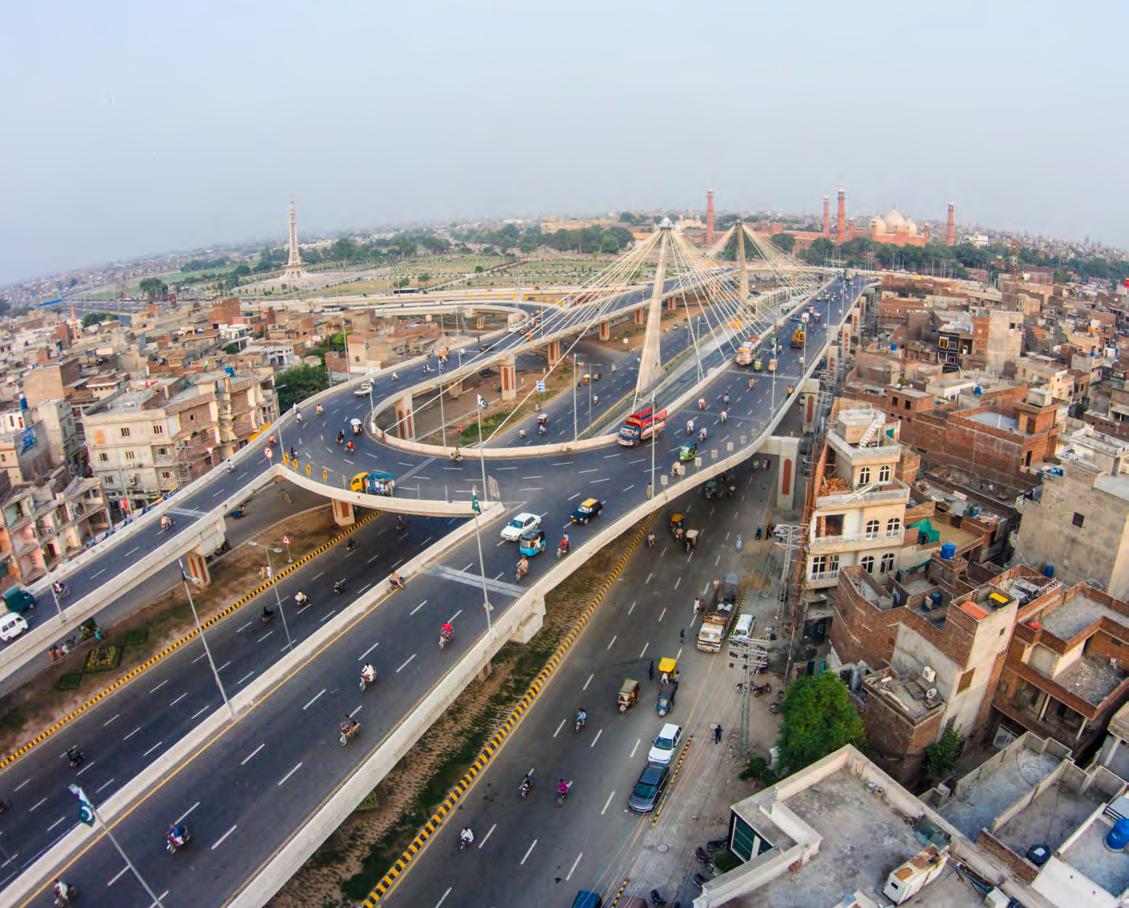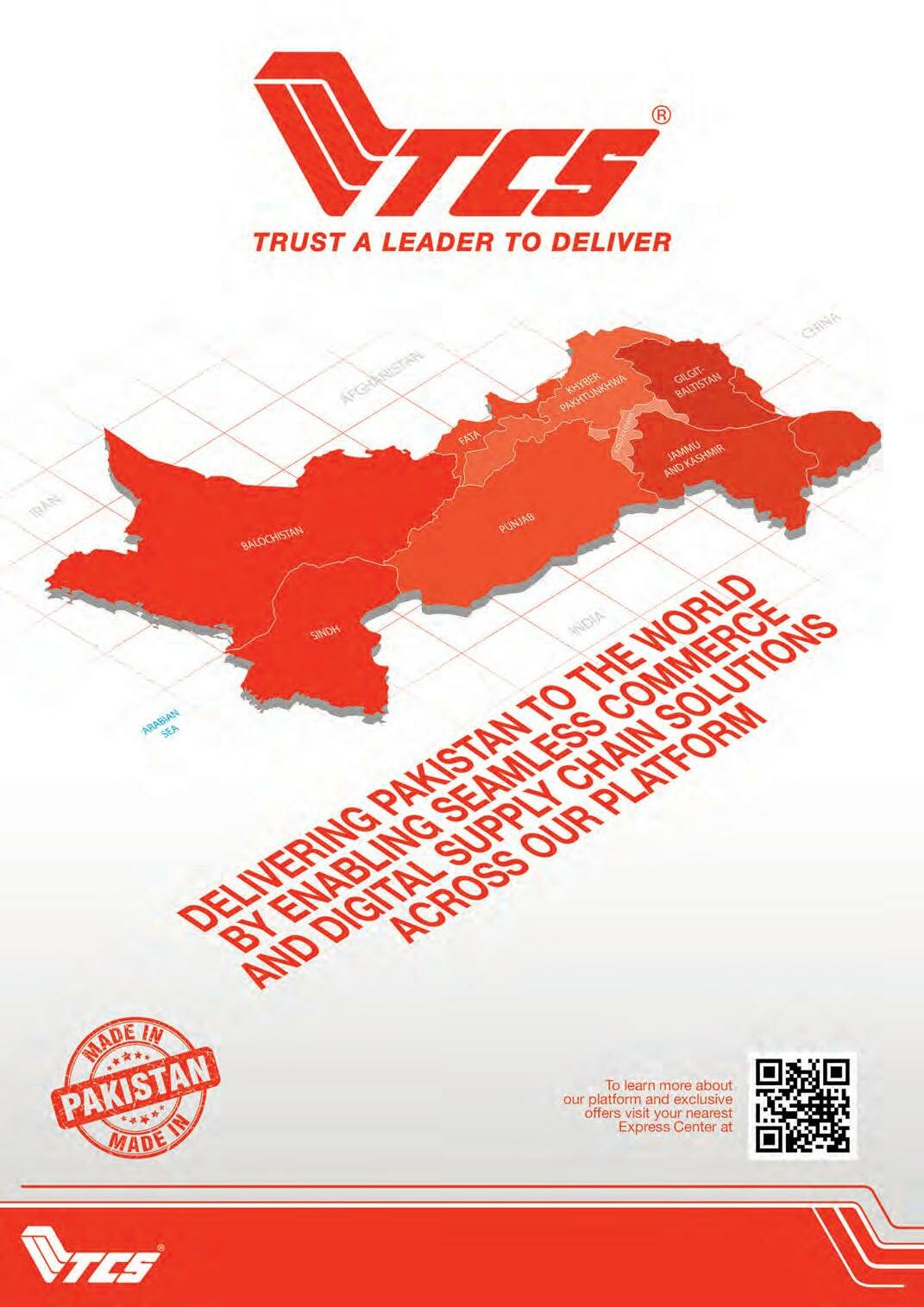
11 minute read
Has the FIR sealed Hascol's fate?
The company was pinning hopes on a restructuring deal with its lenders, but with the FIA dossier now out, would the banks dare pursue this deal any further?
By Babar Nizami
Advertisement
Be careful what you wish for, because you just might get it.
And be careful from whom you apply for a loan, because you just might get it.
If all goes well, no problem. But if it doesn’t, and a business cannot return its loan because it just can’t or because it never intended to, the great debtor-bank pantomime that will subsequently play out depends upon the nature of the bank more than the nature of the business.
The banks exist on a spectrum, really. Three basic categories. The first is the government-owned banks like, most notably, the National Bank of Pakistan. Owned largely by the government, their work culture also unfortunately resembles sarkari sluggishness. These banks have by and large been known to not pursue default cases very aggressively, letting borrowers drag default cases upto seven to ten years. On the other extreme are banks like MCB, owned and run by their seths. The owners of these banks take default cases very personally, and are known to pursue the defaulters very aggressively, both legally and otherwise. Third: the approach of the executives of foreign owned banks or of the local ones run by ‘professional’ bankers lie somewhere in the middle. They seem to care about their bank’s money going bad more than the government owned banks, but probably only as much as it reflects badly on their personal performance.
So, it’s simple, then? Even if a business concern isn’t a bad faith actor, they should just try borrowing from the government-owned banks to hedge against any risks in the worst case scenario.
Well, not quite. After years of litigation and using the bank’s money, most business owners want to settle their loans. A settlement here means a discount from the bank on the principal amount owed to them. It’s (usually) bad faith borrowers who want settlements; banks could have simply seized the assets that had been kept as collateral at the time of the loan. Risk management policies of banks dictate that the collateral has to be a good twenty to thirty percent more than the

amount of the loan. A willingness by the bank to settle for anything less than what is owed instead means that the collateral wasn’t exactly worth what it was purported to be. Private banks, with egg on their face for having been duped, are usually willing to cut their losses and settle. To at least get some amount back.
That, however, is where the government-owned banks might not be as pliant. It’s the government’s money and these bankers would get in trouble for giving write offs on bad loans. And when we say trouble, we don’t just mean compromised careers, we mean stints in the slammer.
If such settlements were prickly for executives in government-owned banks in the pre-NAB era, they are absolutely toxic now.
Okay, so do we have a neat trade-off now? Easier not to pay the sarkari banks but easier to reach settlements with private corporate banks, whose CEOs would be looking to at least boost their recovery KPIs? Shrewd borrowers just need to take a good, hard look at their own circumstances and priorities and decide who to approach for a loan program?
But that’s not where the distinction between the government-owned banks and their private counterparts ends. Yes, the government banks are difficult to reach a settlement with. But a loan restructuring agreement is something they are still more willing to entertain than the private banks. The latter are once-bitten-twice-shy; they don’t want to throw good money after bad. The government bankers are far more receptive to the idea. Anything that still rekindles the hope of getting that original loan bank with interest. Just give the business more money so they can get their business back off the ground, they reason.
It’s again a no-brainer. Borrowers that want their loans restructured - and not settled - should definitely go for banks like the NBP.
A no-brainer, then? No tradeoff?
Actually, there is. And quite a big one. Because if state agencies like the FIA and NAB get involved in the investigation process - whether it is following a tip-off or if the discrepancies in numbers are large enough to initiate an external enquiry - the borrower has had it. When the FIR speaks of “loss to the national exchequer,” every word falls like a heavier axe than the last.
Take the much-publicised case of Hascol. The OMC has accrued a debt of more than a whopping Rs 54 billion. There do seem signs of some foul play on the OMC’s part. The makings of the fraud seem, prima facie, of the commonplace variety. Assets overvalued, profit numbers exaggerated, some domestic LC facilities misused, all to get more loans than the company would on merit qualify for. Apparently all of this is not too uncommon in the corporate and commercial banking scene in Pakistan.
To cut a long story short, since the collateral, it now transpired, was much less than what the books suggested, the banks had no choice but to cut their losses and look into some sort of settlement. That, as discussed above, wasn’t an option for NBP, which was more open, reportedly, to a debt restructuring program. Unfortunately for some of the other banks, it was the NBP that led the consortium of banks that was negotiating with Hascol. And more unfortunate still, that Hascol itself only offered a restructuring.
“Under (a) restructuring agreement, short-term expensive debt is replaced by long-term debt, affordable debt and some new equity,” the company said in a notice sent to the Pakistan Stock Exchange.
Chairman Alan Duncan was similarly optimistic: “I believe we are making good progress in doing so, and I am pleased to be able to explain some of the steps we have taken over the last few months.”
Duncan’s sunny disposition would seem misplaced when the feds, as it were, got involved.
The FIA’s Commercial Banking Circle has registered a case against 30 individuals including former - and some current - executives of the NBP and Hascol. The CBC’s claims, in very definitive language, to have found evidence of bank default, financial fraud and money laundering.

It is a cautionary tale on the perils of borrowing from the nice, obliging government-owned banks all while flying too close to the sun, in terms of size.
You see, Hascol had the private banks by the proverbial. It had all the leverage. It was about to get its way into getting the banks to a very favourable restructuring. Private bankers, while speaking to Profit, spoke of the inevitability of such a new lease of life for the OMC.
The same bankers say that may not happen now because of the FIA’s scrutiny and a declared loss to the NBP “and to national exchequer.” n

OPINION
Asif Saad
“Lahore L’hore ay” — administration provides a sense of general wellbeing and prosperity here. But despite all this, Karachi seems miles ahead in terms of output. but is Lahori culture So why exactly is this so? For starters, Karachi has some inherent advantages. It is a port city and the good for business? center for the country’s financial markets. It has always been the base for multinational companies operating in Pakistan, which has helped build its work ethos as well as its trained and developed management cadre. Lahore seems to have some natural advantages The businessmen I have come to know in Lahore return from work-related trips to Karachi surprised at when it comes to business. Why is Karachi still far the different business culture there. They comment on ahead? It’s all about the culture how Karachiites take their work more seriously, how much more professional and disciplined they are. All this, my Lahore friends recognize, is good for business. Having spent my childhood in Lahore but worked most of my life at corporations based in Karachi, a return to the city once known as the ‘Paris of the East’ for an ongoing consulting assignment some months ago has been an eye-opening experience. Lahore has a lot going for it. For starters, it is the hub of business in central Punjab. All large busiMany seem to be coming to a realization about the need to change Lahore’s work ethos in order to make it more productive. Some even realise that unless they transform their culture, they will be unable to compete and grow. What a waste of potential that would be. “I want to take a group of big business owners from Lahore to Karachi for us to just observe how ness houses in the surrounding areas of Faisalabad, Gujranwala, Sialkot people work in Karachi. We have so much to learn and many other cities converge in Lahore with most having located their from them”, a large business owner in Lahore told me head offices here. In the recent past many of these businesses have been recently. financially successful, as evident in the newfound prosperity behind the I agree. For someone used to Karachi’s fast paced show of wealth one becomes accustomed to seeing in Lahore. and relatively efficient work ethics – far from perfect The city has recently built modern infrastructure of roads and though these may be – it can be frustrating to try and transport which is a huge advantage to businesses. Lahore also has a do business in Lahore. The workforce focus here seems plethora of business schools topped by LUMS, reputed to be the country’s to be on maintaining status quo and not to change for premier business school (full disclosure, I graduated from the first batch. the better. Frequently during a work day, I hear Lahoris Sorry, IBA). All this coupled with much better law and order and civil reflecting upon some inefficiency or work mishap with words like: “Things only happen in this way in this industry/sector/city”. What most find difficult to grasp is the process required to get to the next performance level. A certain evolution is required which can only happen if they accept “what got you here will not get you there”. The writer is a strategy consultant who has previously worked at various C-level positions for national and multinational corporations The obsession with large spaces; be it homes, offices, cars, overshadows any sense of efficiency or introspection on such issues. Much can be achieved with well designed, compact workspaces. Besides more value for money, such spaces improve teamwork and help with sharing ideas, building community among a team, and so on. For these reasons, most company offices in Karachi are located in office buildings, unlike Lahore where most offices are run out of homes converted into workspaces. No wonder they look more like drawing rooms than offices. Another issue in Lahore, probably true for other parts of Punjab as well, is the lack of

diversity in the workforce. There are many different communities in Punjab of course, but the ethnic base is still largely the same. This is very different from Karachi, enriched by a variety of opinions, views, and lifestyles from many ethnic and religious communities other than the mainstream, like Hindus, Parsees, Goan and Anglo-Christians. Another aspect of diversity is that Punjab’s urban labor force includes few women. Many consider it against their traditional community or family ethos to allow “their” women to work outside the home. So, most women in Punjab’s cities don’t go out to work. The lack of women workers is a huge drawback for businesses located here, particularly in the textile and garment industry. Globally, this industry employs mostly women workers for stitching and sewing.
However, in Lahore, the biggest and most cosmopolitan city in Punjab province, there are hardly any women in this sector. This is a problem because women tend to have nimbler fingers and more dexterity, enabling them to produce better quality than men in this field. Women’s increased labour force participation can also bring about positive social change as it has in Bangladesh and other such countries where more women are out working and earning, helping to uplift their family situations.
Given all these issues, how can Lahore change its work culture to make it more efficient? To begin with, business owners in Lahore need to become open to new ideas -- accepting different perspectives even in their traditional businesses. They need to eschew traditional mindsets, challenge the status quo, and change compensation structures to reward creativity and innovation besides just short-term profitability. In this aspect, Lahore business groups need to learn not just from Karachi but even look at cities abroad.
Punjab may not have the diversity that helps generate creativity, but its business community could take the lead in changing this, for example by opening training institutes for women. Training women and paying them well will encourage families to let them go out and work. The flip side of this of course is that women end up bearing the double burden of domestic work as well as work outside the home – something that begins to change in the next generations with increased awareness as they bring up their children differently.
Success won’t come overnight. But to move towards making Lahore, and other cities in Punjab more productive, those with a stake in it must initiate change in their work ethics and culture. The very few companies in Lahore who have realized these things have already started seeing advantages accrue to their businesses and are trendsetters. What will it take for the rest to follow? For the sake of the region’s development and economy, the transformation must begin soon. n









